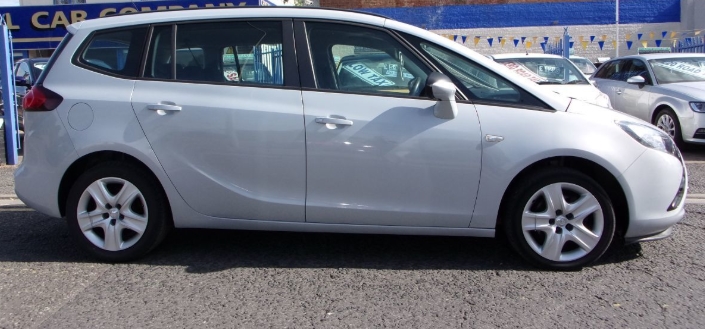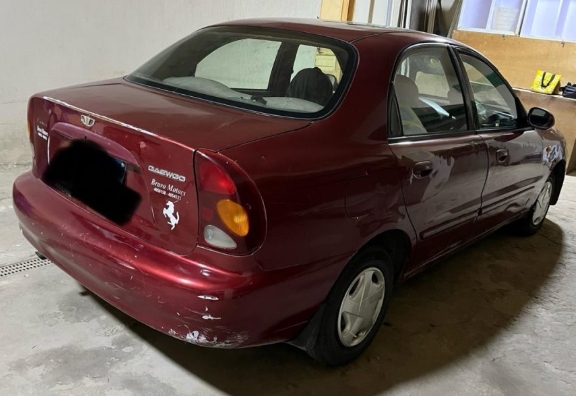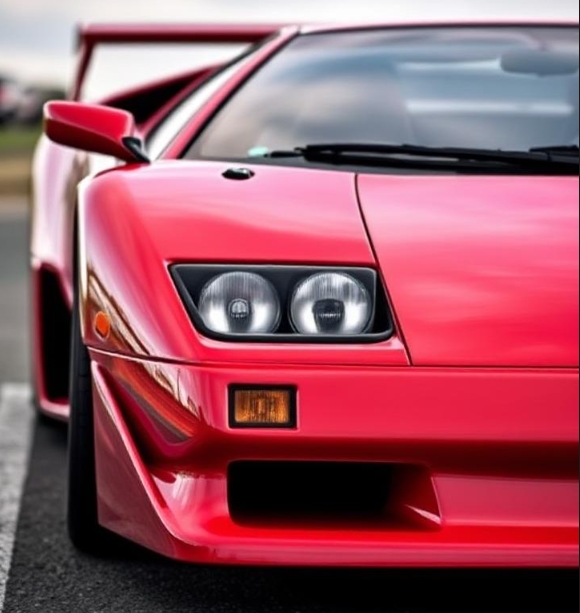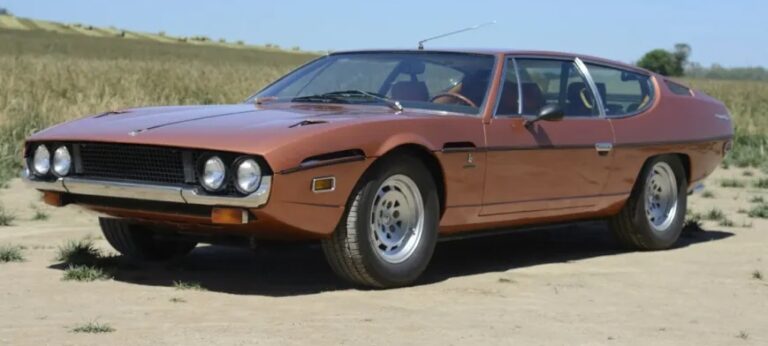The Unassuming Hero: Charting the Evolution of the Vauxhall Zafira
In the landscape of British motoring, few vehicles have defined an era for family transport quite like the Vauxhall Zafira. It wasn’t a sports car that adorned bedroom posters, nor a luxury saloon coveted by executives. Instead, it was an unassuming hero; a practical, versatile, and brilliantly packaged solution to the daily chaos of family life. Its story is one of innovation, adaptation, and ultimately, a reflection of changing automotive tastes. From its revolutionary debut to its quiet departure, the Zafira’s evolution charts the rise and fall of the compact MPV in the UK.
The Zafira was born from a specific need. In the late 1990s, the Multi-Purpose Vehicle (MPV) market was booming, dominated by larger, van-like vehicles such as the Renault Espace and Ford Galaxy. Renault had already found success by shrinking the concept with its Mégane Scénic, creating the “compact MPV” segment. Vauxhall, seeing an opportunity, aimed to outsmart the competition. Their masterstroke was not just to build a seven-seater on the platform of their popular Astra family car, but to engineer a seating system so ingenious it would become the car’s defining feature and a benchmark for the entire industry.
The Game Changer: Zafira A (1999–2005)
Launched in 1999, the first-generation Zafira, known as the Zafira A, was a revelation. Built on the dependable Astra G platform, its exterior styling was neat and conservative, clearly related to its hatchback sibling. But the real magic was inside. Vauxhall introduced the world to the “Flex7” seating system, a piece of packaging genius.
Unlike rivals that required owners to physically remove and store heavy, cumbersome third-row seats, the Zafira’s two rearmost seats folded seamlessly flat into the boot floor. The middle row, a 60/40 split bench, could also slide fore and aft to adjust legroom or fold down to create a vast, van-like loading bay. This transformation from a five-seater with a huge boot, to a seven-seater people carrier, to a practical load-lugger could be achieved in seconds without removing a single component. For families juggling school runs, shopping trips, and weekend adventures, it was a game-changer.
The Zafira A was offered with a straightforward range of petrol and diesel engines drawn from the Astra. The line-up included 1.6-litre and 1.8-litre petrols, which were the volume sellers, alongside a more powerful 2.2-litre petrol. On the diesel front, the 2.0-litre DTi engine provided robust, if slightly agricultural, torque for economical cruising.
The trim levels were designed to cater to a broad spectrum of buyers:
Club: The entry-level model, providing the core Flex7 practicality with basic amenities like electric front windows and central locking.
Life: A common mid-range trim that added features like air conditioning and better upholstery.
Elegance: A more luxurious specification, often including alloy wheels, cruise control, a trip computer, and plusher interior materials.
Design: Introduced later, this trim focused on style, with unique alloy wheels and sportier interior and exterior detailing.
SRi: Aimed at the driver, the SRi offered a firmer suspension setup, sports seats, and more aggressive body styling, typically paired with the more powerful engines.
GSi: The surprise performance model. Vauxhall’s performance division shoehorned a 2.0-litre turbocharged petrol engine producing 189 bhp under the bonnet. With its Recaro seats and aggressive body kit, the Zafira GSi was a true “sleeper,” a hilariously fast MPV that could surprise many hot hatchbacks while still being able to carry seven people.
A minor facelift in 2003 brought subtle updates, including clear tail-lights and a revised grille, keeping it fresh until its replacement arrived. The Zafira A had not only entered the market; it had redefined it.
Refinement and Rocket Power: Zafira B (2005–2014)
By the mid-2000s, the Zafira was a household name. Its successor, the Zafira B, arrived in 2005 with a clear mission: to build on the original’s success by adding more style, quality, and technology. Based on the newer, more sophisticated Astra H platform, the Zafira B boasted sharper, more contemporary styling and a significantly improved driving experience with better ride comfort and handling.
The interior was a major step up. The materials felt more premium, the layout was more ergonomic, and new features became available, most notably an optional panoramic glass roof with an electrically operated sunblind, which flooded the cabin with light. The Flex7 system was retained and subtly improved, remaining the car’s core appeal. Safety was also a key focus, with the Zafira B achieving a full five-star Euro NCAP crash test rating, a crucial selling point for its target audience.
The engine range was broader and more advanced. Petrol options included 1.6-litre (including a higher-output “Twinport” version), 1.8-litre, 2.2-litre direct injection, and a 2.0-litre turbo. The diesel line-up was modernised with the introduction of 1.9-litre CDTi common-rail engines (co-developed with Fiat), offered in various power outputs and providing a much-needed blend of performance and economy. A more environmentally conscious 1.7-litre CDTi later joined the range.
The trim hierarchy evolved to match Vauxhall’s contemporary structure:
Life: Remained the accessible entry point.
Club: Continued as a popular mid-range choice.
Exclusiv: A well-equipped trim that often proved the sweet spot in the range, balancing cost and features like air conditioning and alloy wheels.
Design: Offered a more stylish flavor with larger alloys, chrome detailing, and upgraded interior trim.
SRi: The sporty model returned with lowered suspension, a full body kit, and sports seats, giving the family wagon a more dynamic look and feel.
Elite: The range-topping luxury model, featuring full leather upholstery, heated front seats, and automatic climate control.
The standout model of this generation was, without doubt, the Zafira VXR. Replacing the GSi, the VXR (Vauxhall Racing) turned the performance dial up to eleven. It used an evolution of the 2.0-litre turbo engine, now producing a staggering 237 bhp. This made the Zafira VXR the most powerful and fastest compact MPV on the market, capable of 0-60 mph in just over seven seconds. Finished in signature Arden Blue paint and with huge 18-inch wheels and a dramatic body kit, it was a gloriously absurd and brilliant machine—the definitive performance MPV.
The Zafira B received a facelift in 2008, featuring redesigned front and rear bumpers and lighting clusters. Even after its official successor was launched, it continued to be sold for several years as the “Zafira Family,” serving as a budget-friendly alternative to the newer model.
The Premium Push: Zafira Tourer (2011–2018)
As the 2010s dawned, the automotive market was beginning to shift. While the MPV segment was still strong, the first signs of the SUV boom were emerging. Vauxhall’s response was to move the Zafira upmarket with the third generation, launched in late 2011 and named the Zafira Tourer.
This was a larger, sleeker, and far more premium vehicle. Its design was a radical departure, defined by distinctive “boomerang” style headlights that flowed into the lower fog light surrounds. It was longer and wider, providing significantly more interior space for passengers in all three rows. The quality of the cabin was a leap forward, with soft-touch plastics and a design heavily influenced by the contemporary Insignia saloon.
The seating system was evolved again. While still called Flex7, the middle row was now composed of three individual sliding and reclining seats. The optional “Lounge Seating” system allowed the middle seat to fold and transform into a comfortable armrest for the two outer passengers, who could then slide their seats backwards and inwards for limousine-like legroom and shoulder room.
Technology saw a major upgrade, with features like adaptive cruise control, lane departure warning, and the FlexRide adaptive chassis system becoming available. The engine range was modernised further, featuring efficient turbocharged 1.4-litre petrol engines and quiet, powerful 2.0-litre CDTi “Whisper” diesels.
The Zafira Tourer was initially sold alongside the Zafira B, creating a two-tier model range. Its trim levels reflected its more premium positioning:
ES: The entry model, which still came with standard air-con, cruise control, and DAB radio.
Exclusiv: Added features like parking sensors and better interior trim.
SE: A high-spec model offering a good balance of luxury and technology.
SRi: Again provided the sporty aesthetics with a body kit and larger wheels.
Elite: The flagship, loaded with leather, panoramic windscreen, and advanced technology.
Tech Line: A popular trim aimed at both business and retail customers, bundling desirable features like satellite navigation at a competitive price.
In 2016, the Zafira Tourer received a major facelift. The “Tourer” name was officially dropped in marketing (though it remained on the V5C), and the distinctive boomerang headlights were replaced with a more conventional front-end design that aligned it with the new Astra K. This simplified the look but arguably lost some of the car’s unique character.
.

.
The Final Bow and an Evolving Market
Despite the Zafira Tourer’s qualities, the market had irrevocably shifted. By the mid to late 2010s, families were overwhelmingly choosing SUVs. Their high driving position, rugged looks, and perceived safety made them the new family car of choice. Sales of MPVs, including the Zafira, began a steady decline. Vauxhall’s own line-up, featuring the Mokka X, Crossland X, and Grandland X SUVs, was now competing internally with its stalwart MPV.
In 2018, production of the Vauxhall Zafira ceased at the Bochum plant in Germany. After nearly two decades and three distinct generations, the innovative MPV was gone. The nameplate was briefly resurrected in 2019 for the Zafira Life, but this was a completely different vehicle—a badge-engineered version of the Citroën/Peugeot/Toyota commercial van-based MPV, appealing to a different, larger-family market.
The original Zafira’s legacy, however, is indelible. It democratised seven-seat family travel with a piece of design so clever and intuitive that it forced every competitor to react. It was a vehicle that perfectly understood its brief: to be flexible, practical, and affordable. From the simple genius of the Zafira A, through the mature all-rounder that was the Zafira B, to the premium aspirations of the Zafira Tourer, it adapted to the times. But it could not adapt to being a different type of car, and so it stands today as a monument to the golden age of the MPV—a true, unassuming hero of the British road.







